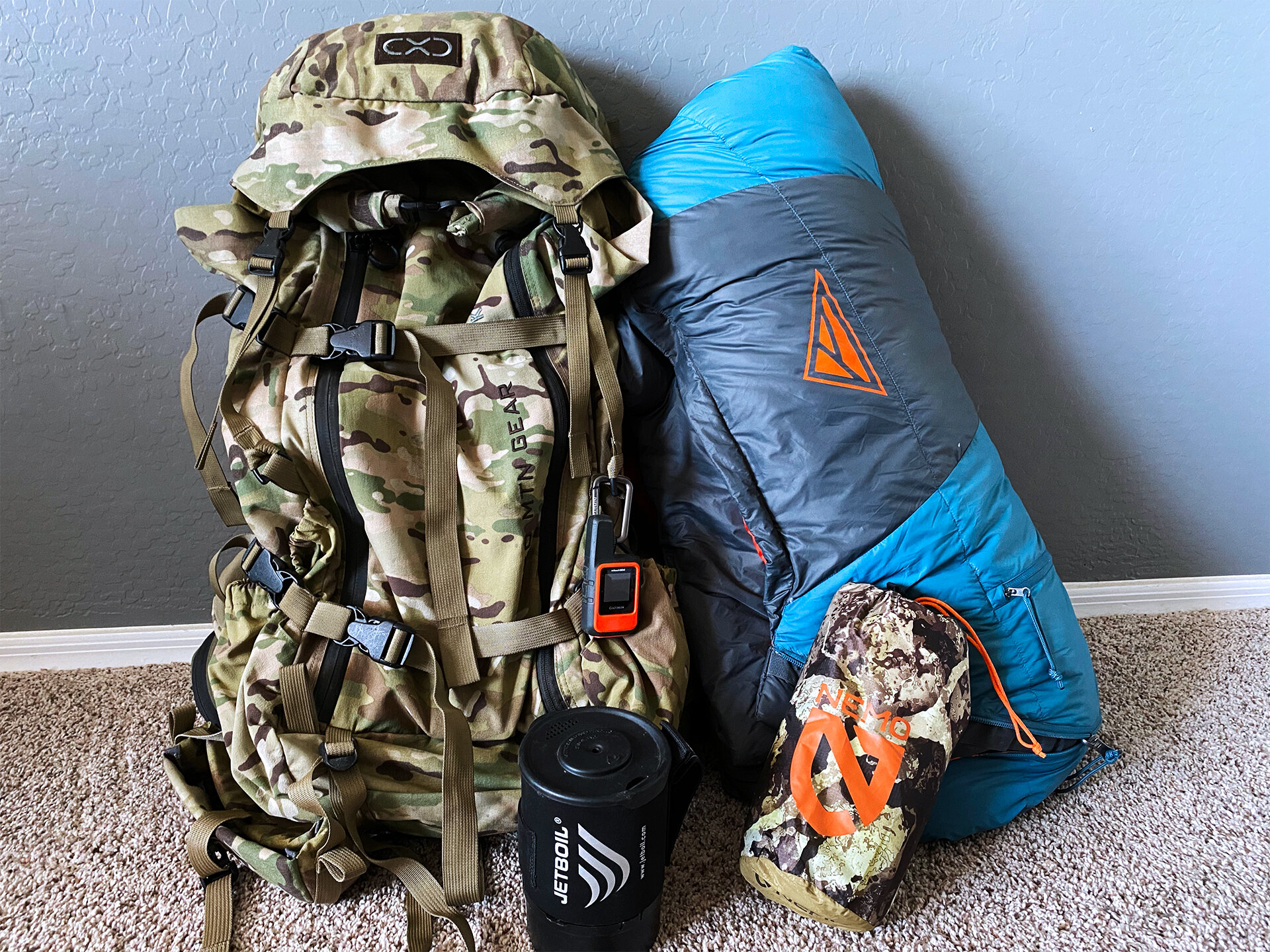We’ve talked about it before on this site, and it’s no secret to anyone who’s ever investigated backcountry hunting: backpacking can be expensive! That being said, it doesn’t have to be. I’ve always encouraged guys to scrape together whatever cheap and/or used backpacking gear they can get their hands on, and just get out there and get started. You can get a lot accomplished with a hand-me-down pack, a used sleeping bag with some life left in it, and a cheap (but not necessarily ultralight) tent. I spent years hunting the backcountry with just that setup (I was using the same mummy bag I bought in Boy Scouts, for crying out loud). I’ve boiled water over an open fire (and on a $10 Walmart camping stove), and I’ve put plenty of miles on cheap, slightly ill-fitting Cabela’s brand boots. It can be done.
Yes, I look like an old-timey traveling peddler, but that budget backcountry kit got me through many-a-hunt before I started upgrading pieces.
That being said, nice gear is always…well…nice. Once you finally upgrade a piece of gear and start using it, you discover what you never knew you were missing. Your pack doesn’t pinch your shoulders or hurt your hips. Your hiking boots stop creating hot spots. You sleep better through the night because your pad is warmer and softer. It’s the reason people spend more on this gear in the first place, it generally works better, lasts longer, and will ultimately allow you to be out in the field longer which creates more opportunity for success. I bring all this up because we are smack-dab in the middle of Fall prep season. Hopefully, you’re shooting your weapon regularly, maybe getting in some early scouting, and spending long evenings dropping fresh waypoints on your maps to investigate once you get out there. But, if you’re like me, you’re also taking an inventory of your current kit and contemplating what discount backpacking gear you want to upgrade this year.
So, if you find yourself with several pieces of gear you’d like to upgrade but only so much money to go around (which is pretty much all of us), here are the items I would recommend upgrading first while letting your other stuff ride for another year…
Full disclosure: if you buy anything through the links below, I get a little bit of hunting money at no increased cost to you. Thanks for supporting the blog!
Your Pack
This is obviously a big-ticket item, and to be honest, it’s one I didn’t upgrade for a long time. I spent years with a day-pack that was poorly designed and wasn’t able to actually pack out my elk from a few years ago, and for longer excursions I used an internal frame Kelty pack that I got on clearance (it was bright yellow) over a decade ago because I wanted to get back into backpacking. Both functioned in that they carried my stuff, but I didn’t realize that the nasty pain I would always get in between my shoulder blades and the pinching around my hips wasn’t just part of backpacking. My lovely wife surprised me two Christmases ago with my dream pack - an Exo Mountain Gear - and a couple miles into my first trip with it, I realized just how good a pack can feel.
This pack has revolutionized my backcountry life…can’t imagine using another one ever again!
Your Sleeping Pad
Up until this past year I rocked some version of a simple, cheap, foam pad. The first was a Wal-Mart special. It rolled up like a Ho-Ho (oh man, now I’m hungry), had ZERO insulation or R-value, and let you feel every single rock or bump under you. I then upgraded to the egg-carton style Therm-A-Rest with the heat reflecting coating on one side. Warmer…yes. More comfortable…a little. But, if I was out for more than two nights, I would notice my hips and shoulders (I’m a side sleeper) actually getting sore from sleeping on the ground. I was always a little leery of moving to an inflatable pad because if it went flat in the field, then I’m in for a pretty nasty night (plus, they’re expensive). But, I finally gave one a try, and from the first night I ever laid on it, I was hooked! It was SO much warmer, SO much softer, and my hips and shoulders stayed fully off the ground while sleeping on my side. I wished I had made that move years earlier! (Make sure you get in insulated one with an R-value as close to 4 as your budget will allow)
Your Sleeping Bag
I actually upgraded these in reverse order (I upgraded my bag first but kept using my cheap pad), and I would honestly prioritize the pad over the bag now that I’ve seen the benefits of both. That being said, I also LOVE my new sleeping bag. Like I mentioned, I used the same old 20-degree Slumberjack mummy bag that I bought as a 12-year-old Boy Scout until just last year (I’m 35). I had never been taught to hang my bag for storage instead of in its stuff sack (if you didn’t know that, better run out to the garage and rescue your sleeping bag), so I’m sure by that point it had become more of a 50-degree bag. The last two nights of my Colorado elk trip last Fall dipped into the mid-30s, and it was miserable! I finally upgraded my bag last winter and took it out on a cold windy night, and my has technology ever improved over the years! It’s smaller, lighter, and a million times warmer! The Kelty I picked up even has these baffles around the collar that keep drafts out…genius! With a fully upgraded backcountry sleep system, I’m getting so much better sleep in the field, it’s not even funny!
Your Stove
Okay, this one could obviously be of second-tier importance (since you can cook over fire or on a cheap stove), but I will say the time and effort you save with a good stove will pay off on a long journey in the backcountry. Firewood takes work, and you’ll burn through more of it if you have to keep your fire long and hot enough to do all your cooking (you’ll also have to start multiple fires for morning coffee…afternoon coffee…any other time coffee). And while cheap stoves are available, I distinctly remember the last night I spent with my budget Walmart stove (the kind that comes in a box the size of a deck of cards and just screws onto the top of any fuel canister). I had left the office straight for the trailhead, hiked to my camping/glassing spot by headlamp, and got my camp setup in a fairly cold and windy spot. It took me a long time just to get the stove lit, and even with a full canister and the valve cranked all the way open, the most I could get out of that little stove was warm-ish water…it just couldn’t keep up in less than perfect conditions. After that hunt, I upgraded to a Jetboil, and have never looked back. This thing has handled cold, wind, elevations above 10,000 feet…and being able to get your dehydrated dinner going in less than two minutes after a long day of hunting is a joy you have to experience to believe.
Any of these four items will be a worthwhile upgrade for your Fall adventures this year!
Whatever Works for You
Okay, those are my top-four items and the reasons I chose them, but so much of a backcountry hunting kit is based on user preference. I didn’t mention boots because I’ve written elsewhere about the need for good boots and I kind of assumed proper fitting footwear was a given. I didn’t mention a tent upgrade because if it keeps you dry, then it can still work. (Of course I have my eye on a new backpacking tent that will shave nearly four pounds off my pack immediately, but I wouldn’t prioritize it over the other items I listed above)
At the end of the day, you have to decide what’s most important to you in the backcountry. If you’re torn between two upgrades for this season, hopefully this has given you some direction. Whatever you decide, let me make one more reminder that there is no substitute for getting out there and having an adventure. If you’re ever choosing between upgrading a piece of gear and actually being able to go on a hunt, choose the hunt…EVERY TIME.




